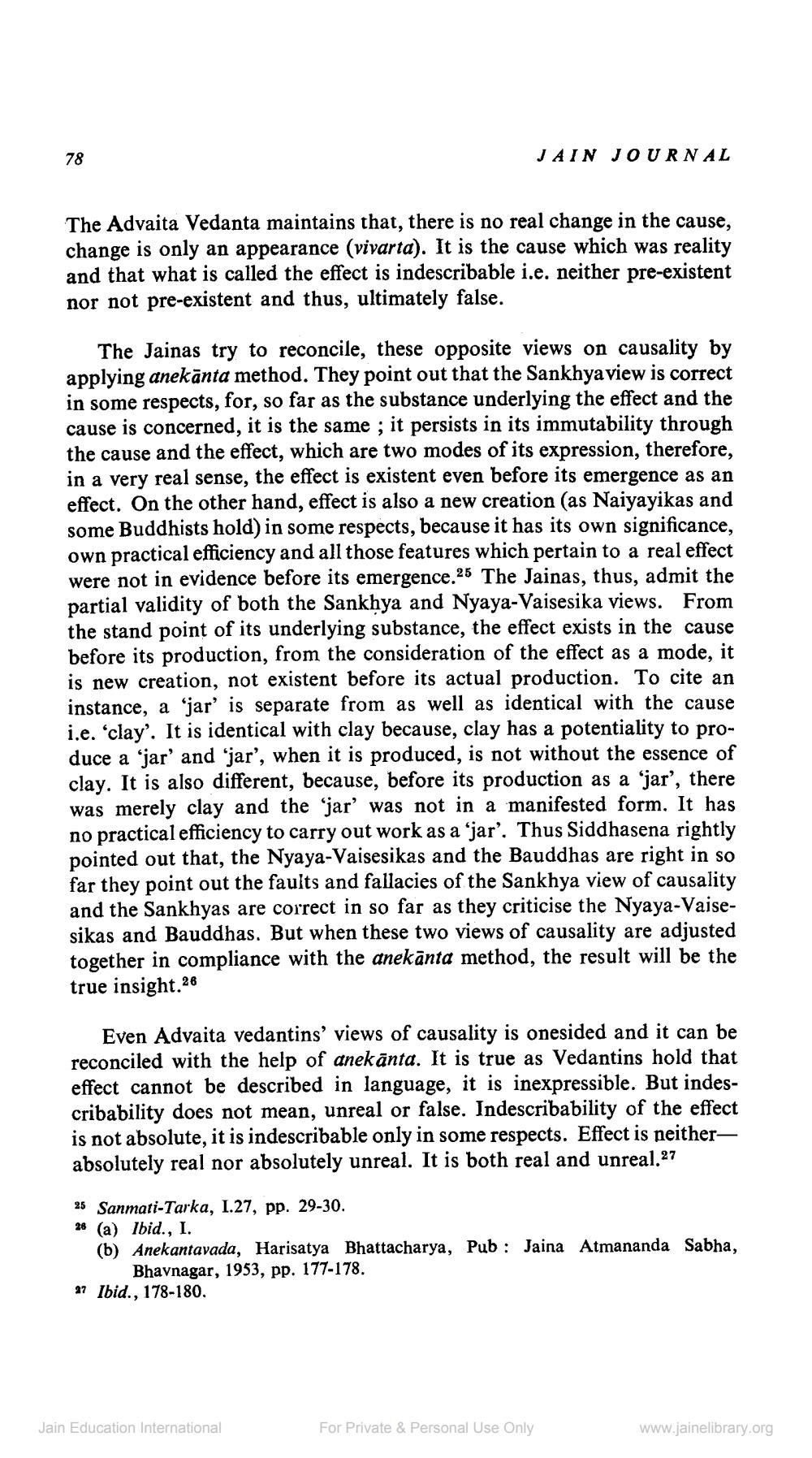________________
78
JAIN JOURNAL
The Advaita Vedanta maintains that, there is no real change in the cause, change is only an appearance (vivarta). It is the cause which was reality and that what is called the effect is indescribable i.e. neither pre-existent nor not pre-existent and thus, ultimately false.
The Jainas try to reconcile, these opposite views on causality by applying anekanta method. They point out that the Sankhyaview is correct in some respects, for, so far as the substance underlying the effect and the cause is concerned, it is the same; it persists in its immutability through the cause and the effect, which are two modes of its expression, therefore, in a very real sense, the effect is existent even before its emergence as an effect. On the other hand, effect is also a new creation (as Naiyayikas and some Buddhists hold) in some respects, because it has its own significance, own practical efficiency and all those features which pertain to a real effect were not in evidence before its emergence.25 The Jainas, thus, admit the partial validity of both the Sankhya and Nyaya-Vaisesika views. From the stand point of its underlying substance, the effect exists in the cause before its production, from the consideration of the effect as a mode, it is new creation, not existent before its actual production. To cite an instance, a 'jar' is separate from as well as identical with the cause i.e. 'clay'. It is identical with clay because, clay has a potentiality to produce a 'jar' and 'jar', when it is produced, is not without the essence of clay. It is also different, because, before its production as a 'jar', there was merely clay and the 'jar' was not in a manifested form. It has no practical efficiency to carry out work as a 'jar'. Thus Siddhasena rightly pointed out that, the Nyaya-Vaisesikas and the Bauddhas are right in so far they point out the faults and fallacies of the Sankhya view of causality and the Sankhyas are correct in so far as they criticise the Nyaya-Vaisesikas and Bauddhas. But when these two views of causality are adjusted together in compliance with the anekanta method, the result will be the true insight.26
Even Advaita vedantins' views of causality is onesided and it can be reconciled with the help of anekanta. It is true as Vedantins hold that effect cannot be described in language, it is inexpressible. But indescribability does not mean, unreal or false. Indescribability of the effect is not absolute, it is indescribable only in some respects. Effect is neitherabsolutely real nor absolutely unreal. It is both real and unreal.27
25 Sanmati-Tarka, I.27, pp. 29-30.
26 (a) Ibid., I.
(b) Anekantavada, Harisatya Bhattacharya, Pub: Jaina Atmananda Sabha, Bhavnagar, 1953, pp. 177-178.
27 Ibid., 178-180.
Jain Education International
For Private & Personal Use Only
www.jainelibrary.org




